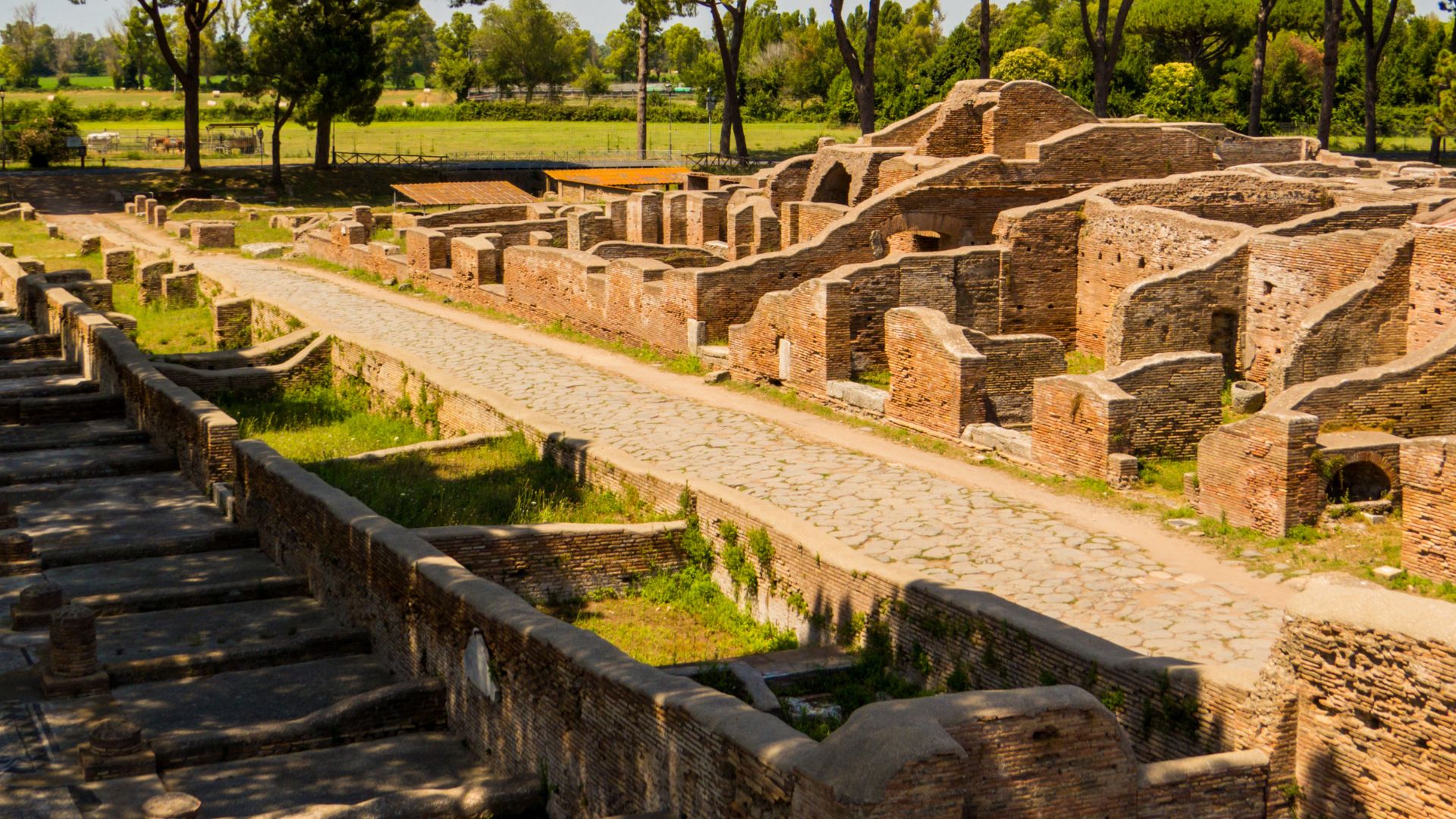Last week, I stepped off a small train just 30 minutes from Rome. I found myself alone among ancient Roman streets, shops, and homes with barely another tourist in sight. Ostia Antica offers all the wonder of ancient Roman ruins without the crushing crowds you’ll find at the Forum or Pompeii. This archaeological park gives you a more impressive and intimate look at daily Roman life than many of Rome’s famous sites, yet remains wonderfully uncrowded even during peak travel seasons.
Walking through Ostia’s well-preserved streets felt like having my time machine. I wandered through ancient apartment buildings, sat in a 2,000-year-old theater, and examined intricate mosaics in former bathhouses. Often, I was the only visitor in sight. The maze-like quality of the ruins invites exploration. Without crowds blocking your view, it’s easier to imagine the bustling port city this once was.
Getting there couldn’t be simpler—a quick metro ride followed by a short train journey from Rome’s center. For anyone feeling overwhelmed by Rome’s tourist hordes but still wanting to experience authentic ancient Roman history, this day trip provides the perfect escape. I found myself wondering why more visitors don’t make the small detour to this remarkable site.
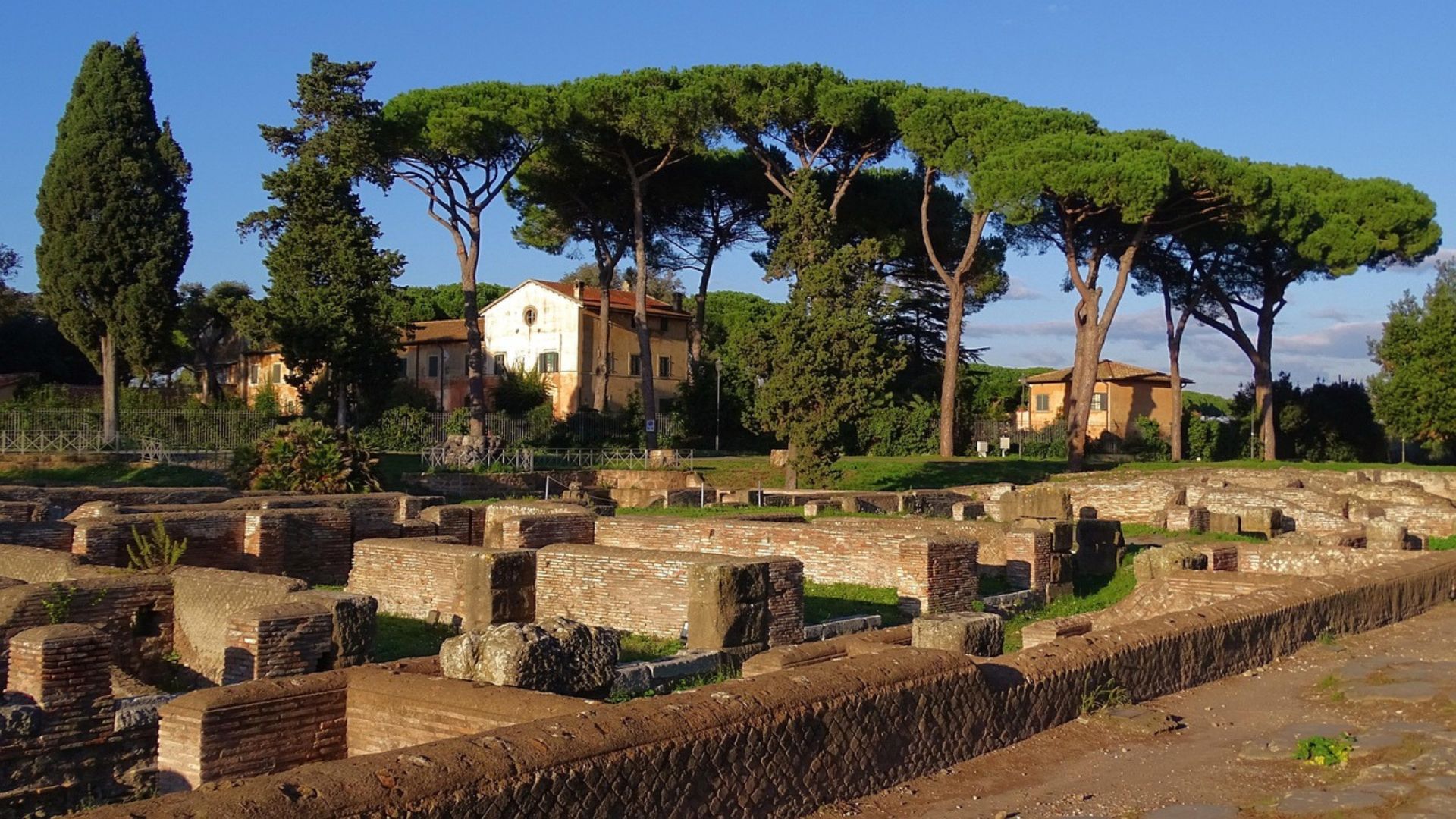
Exploring the Ancient Port City
Walking through Ostia Antica feels like stepping back in time. This remarkable port city once served as the gateway to Ancient Rome, bustling with traders and travelers from across the Roman Empire.
Unlike the crowded streets of Rome’s popular ruins, Ostia Antica offers a peaceful journey through history. The well-preserved streets let you wander at your own pace without fighting through tourist crowds.
I loved exploring the ancient theater, which could hold up to 4,000 spectators in its day. It’s still in amazing condition and gives you a real sense of Roman entertainment.
The Baths of Neptune showcase the Romans’ advanced understanding of comfort and hygiene. The detailed mosaics of sea creatures on the floor are still visible after thousands of years!
Don’t miss the ancient apartment buildings and shops along the main street. You can peek into what were once taverns, bakeries, and homes of regular Romans. It’s fascinating to see how similar their daily needs were to ours.
The temples and religious buildings highlight the diverse spiritual life of this port city. People from all corners of the empire brought their customs and beliefs here.
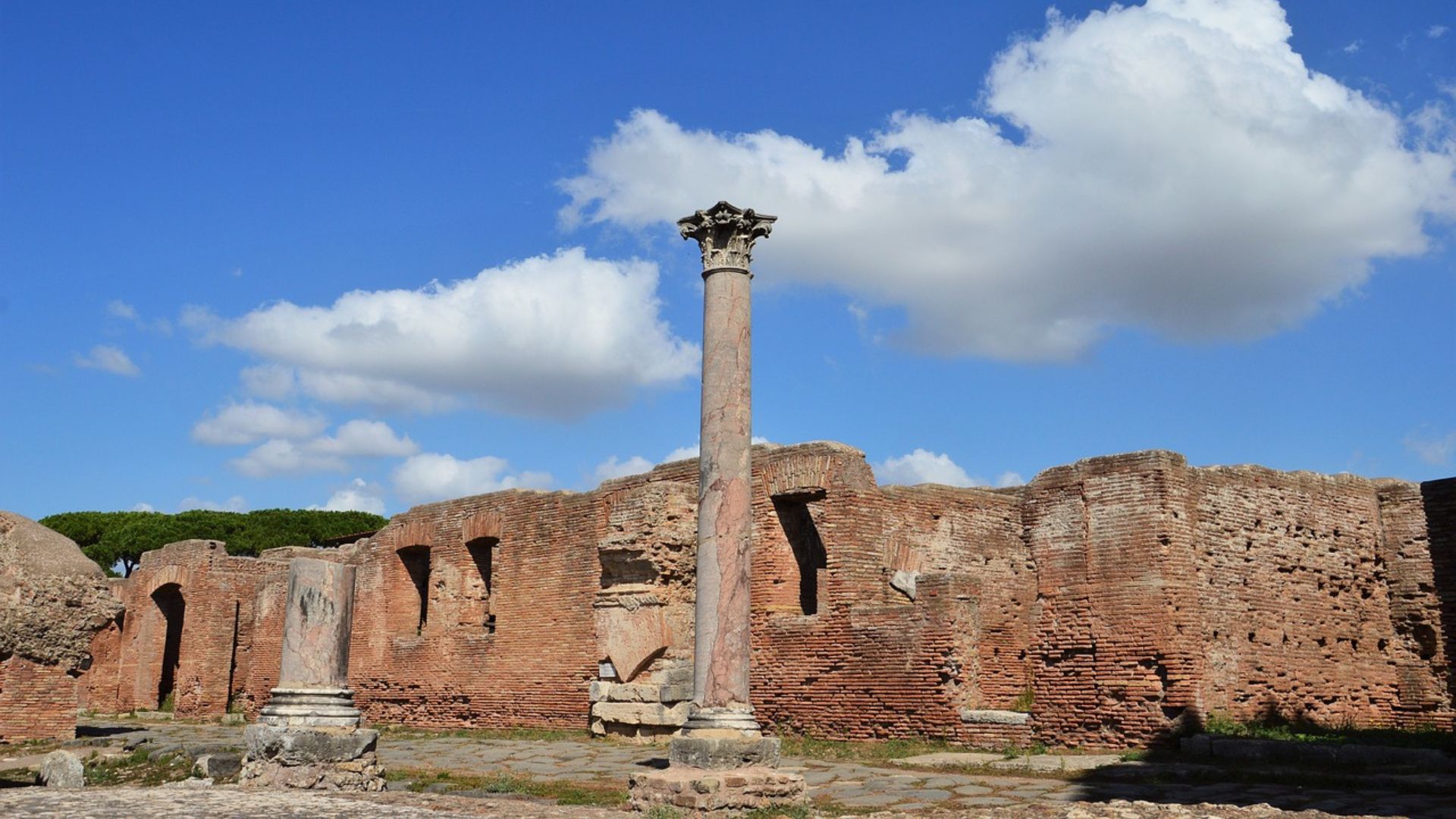
Traveling to Ostia Antica
Getting to this ancient Roman port city is surprisingly easy and convenient from Rome. The journey itself became part of my adventure, offering glimpses of the Italian countryside along the way.
Taking the Metro Line B
To reach Ostia Antica, I started my journey on Rome’s Metro Line B. I took the blue line to the Piramide station, which was simple to find on the metro map. From there, I transferred to the Roma-Lido train line that runs directly to Ostia Antica.
The train ride took about 30 minutes, giving me time to plan my day while watching the scenery change from urban to suburban. Tickets cost only €1.50 each way – the same as a regular metro ticket in Rome, making this an incredibly budget-friendly day trip.
When I arrived, I looked for the blue sky bridge that crosses the road near the station. This landmark helped me find my way to the archaeological site entrance, which was just a short 5-minute walk away.
Proximity to Fiumicino Airport
One surprising advantage of Ostia Antica is its location near Fiumicino Airport. I discovered this makes it a perfect stop for travelers with long layovers or those who have a few hours before an evening flight.
The archaeological site is only about 8 km from the airport, making it easily accessible by taxi. During my visit, I met several travelers who had squeezed in Ostia Antica before their departures instead of waiting at the airport.
For those with luggage, there are storage facilities available near the entrance. I noticed many visitors had planned their itineraries specifically to end with Ostia Antica before heading directly to catch their flights home – a clever travel hack worth considering!

A Glimpse into Roman Daily Life
Exploring Ostia Antica offered me an intimate view into how Romans lived their daily lives. The remarkably preserved buildings and streets tell stories of real people who once called this port city home.
Residential Areas and Roman Houses
I wandered through neighborhoods where ordinary Romans once lived, far from the grand palaces of emperors. The multi-story apartment buildings (insulae) housed most of the city’s population, with tiny units stacked several floors high. These were nothing like our modern apartments!
The wealthier citizens lived in domus-style homes with beautiful atrium courtyards. I was amazed to see colorful mosaic floors still intact after 2,000 years. One house had dolphins and sea creatures decorating the entrance – perhaps belonging to a merchant who made his fortune from the sea.
The walls still show faded paint and decorative elements. Walking through these spaces, I could almost picture families gathering for meals or merchants returning home after a busy day at the port.
Public Baths and Latrines
The baths were social centers, not just places to get clean. I explored the magnificent Baths of Neptune, named for its stunning mosaic of the sea god driving a chariot pulled by seahorses.
These facilities were ingeniously designed with different temperature rooms – the frigidarium (cold), tepidarium (warm), and caldarium (hot). Underground heating systems kept floors and walls warm, an impressive feat of Roman engineering.
The public latrines surprised me most – communal toilets where Romans sat side by side on stone benches with openings. No privacy here! I learned these were also social spaces where people chatted while handling their business. Running water beneath carried waste away – remarkable plumbing for the ancient world.
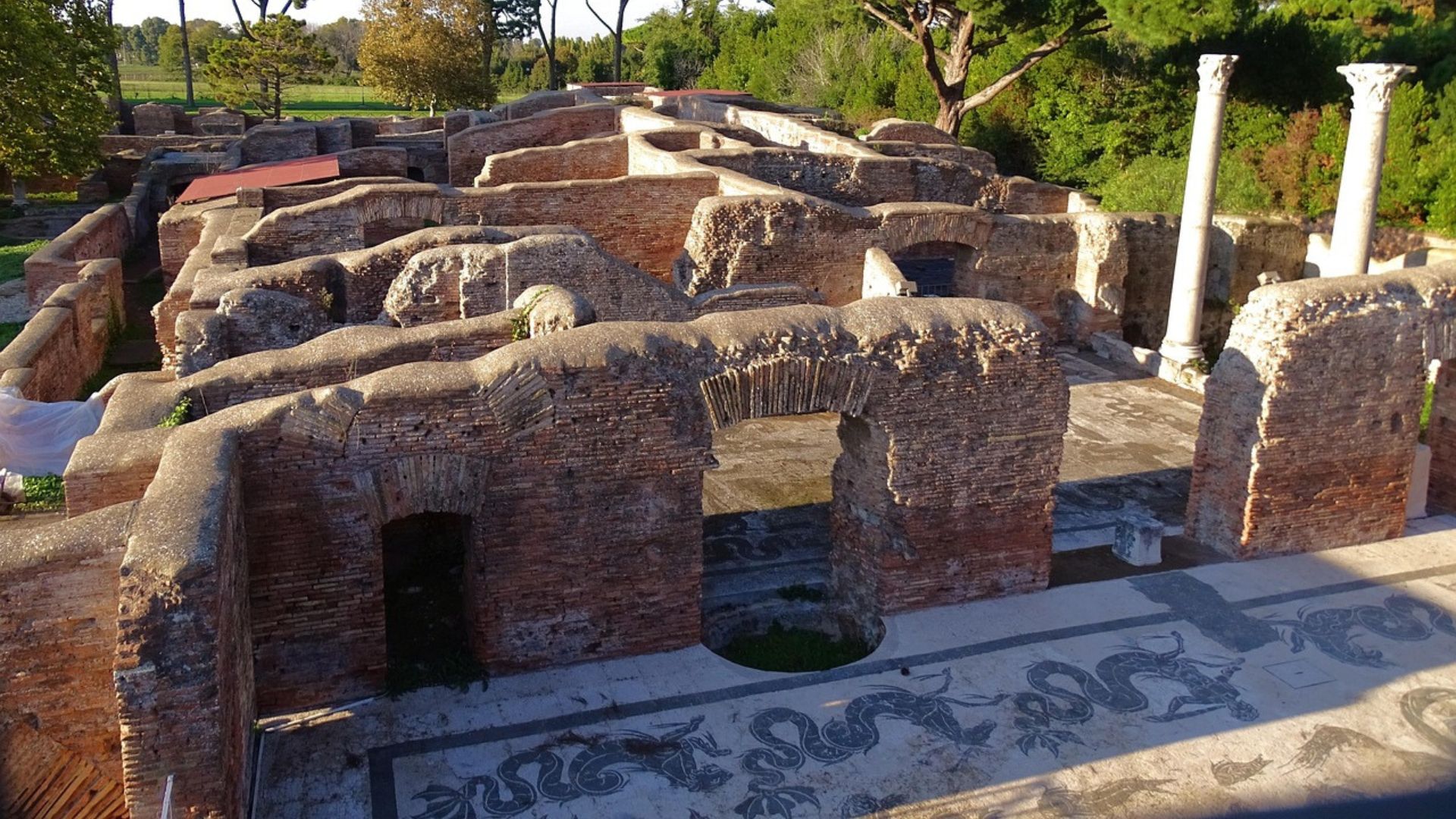
Shops and Taverns
The main streets of Ostia Antica feature rows of well-preserved shops that once bustled with commerce. I walked past bakeries with stone mills and ovens still visible, and storefronts where merchants displayed goods.
The Thermopolium (ancient fast-food restaurant) fascinated me with its marble counter containing deep vessels that once held food. These establishments served hot meals to workers and travelers who didn’t have cooking facilities.
Wine shops (tabernae) appear frequently throughout the city, showing how important communal drinking was in Roman social life. I found game boards carved into stone benches outside taverns where patrons once played while enjoying their drinks.
The detailed shop signs – a pig for a butcher, wheat for a baker – helped the illiterate navigate the marketplace. Standing in these spaces, I felt connected to the everyday Romans who once haggled, gossiped, and went about their daily shopping.
The Artistic Heritage of Ostia
Walking through Ostia Antica feels like stepping into an open-air museum where art and architecture blend seamlessly. The site preserves some of the most impressive ancient Roman artwork outside of Rome’s Capitoline Museums.
Sculptures and Mosaics
The mosaics at Ostia Antica took my breath away. Unlike the crowds pushing to see similar works in Rome, I had entire rooms to myself to admire these ancient masterpieces. The Baths of Neptune feature a stunning mosaic of the sea god pulled by four seahorses – the details remain incredibly vivid despite being nearly 2,000 years old.
What impressed me most was the variety. From simple black and white geometric patterns in modest homes to elaborate colored scenes in wealthy merchants’ houses, these mosaics tell stories about daily Roman life.
The sculptural works are equally impressive. Though many premier pieces were moved to museums in Rome, several original sculptures remain on site. I spotted detailed reliefs showing shipping scenes, appropriate for this once-bustling port city.
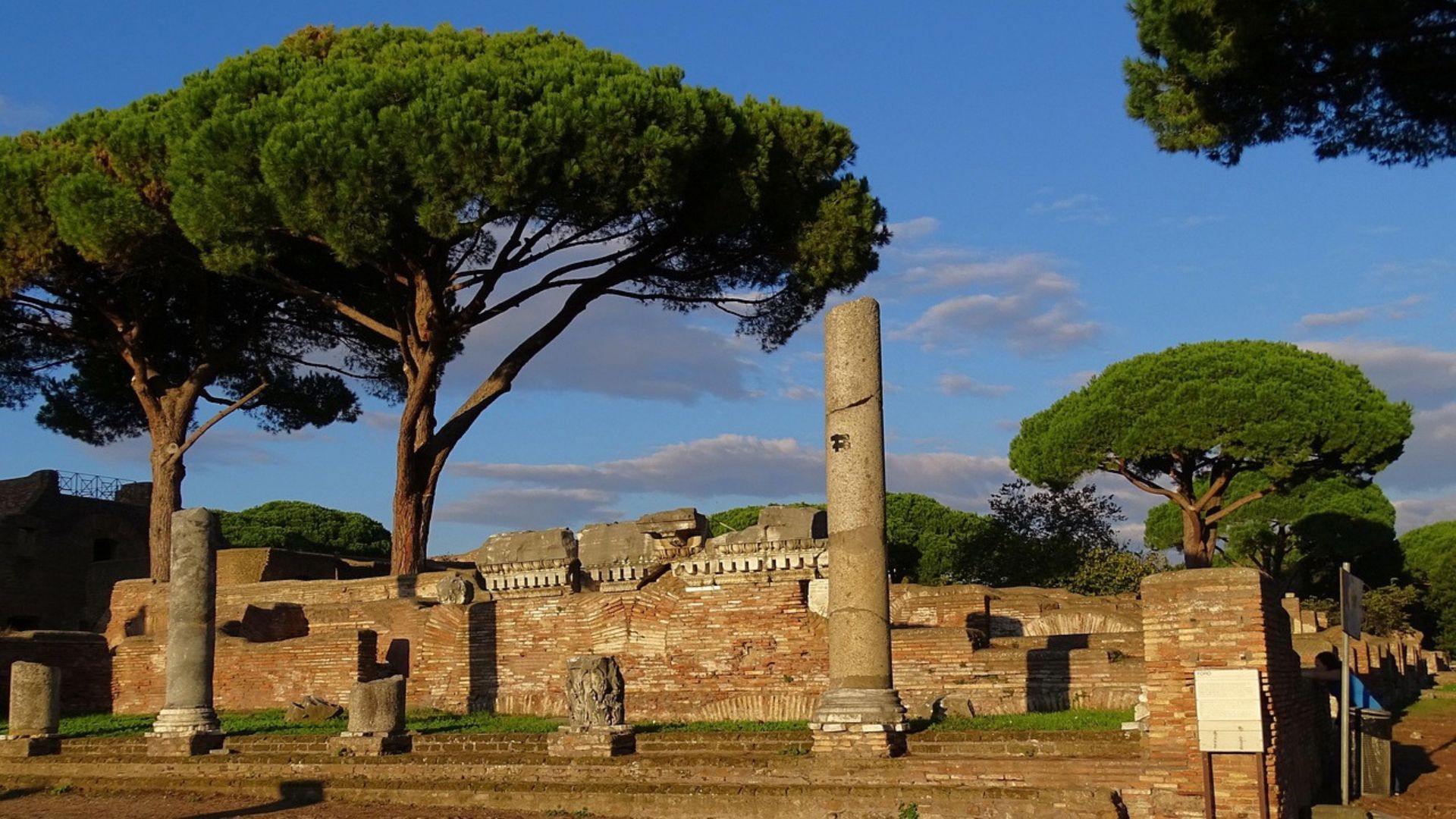
Architectural Influences
Ostia’s architecture shows how Roman design evolved over centuries. Walking down the ancient streets, I noticed buildings from different eras standing side by side, creating a timeline of architectural development.
The Capitolium temple demonstrates classic Roman religious architecture with its imposing columns and elevated position. Though not designed by Michelangelo (who worked some 1,400 years later), the precision of these ancient structures surely would have impressed even him.
I was fascinated by the multi-story apartment buildings (insulae) that housed most residents. These ingenious structures solved urban housing challenges in ways that modern architects still reference today.
The public baths showcase the Romans’ engineering brilliance. With their curved ceilings and clever heating systems, these spaces reveal how architecture served both practical and social functions in Roman society.
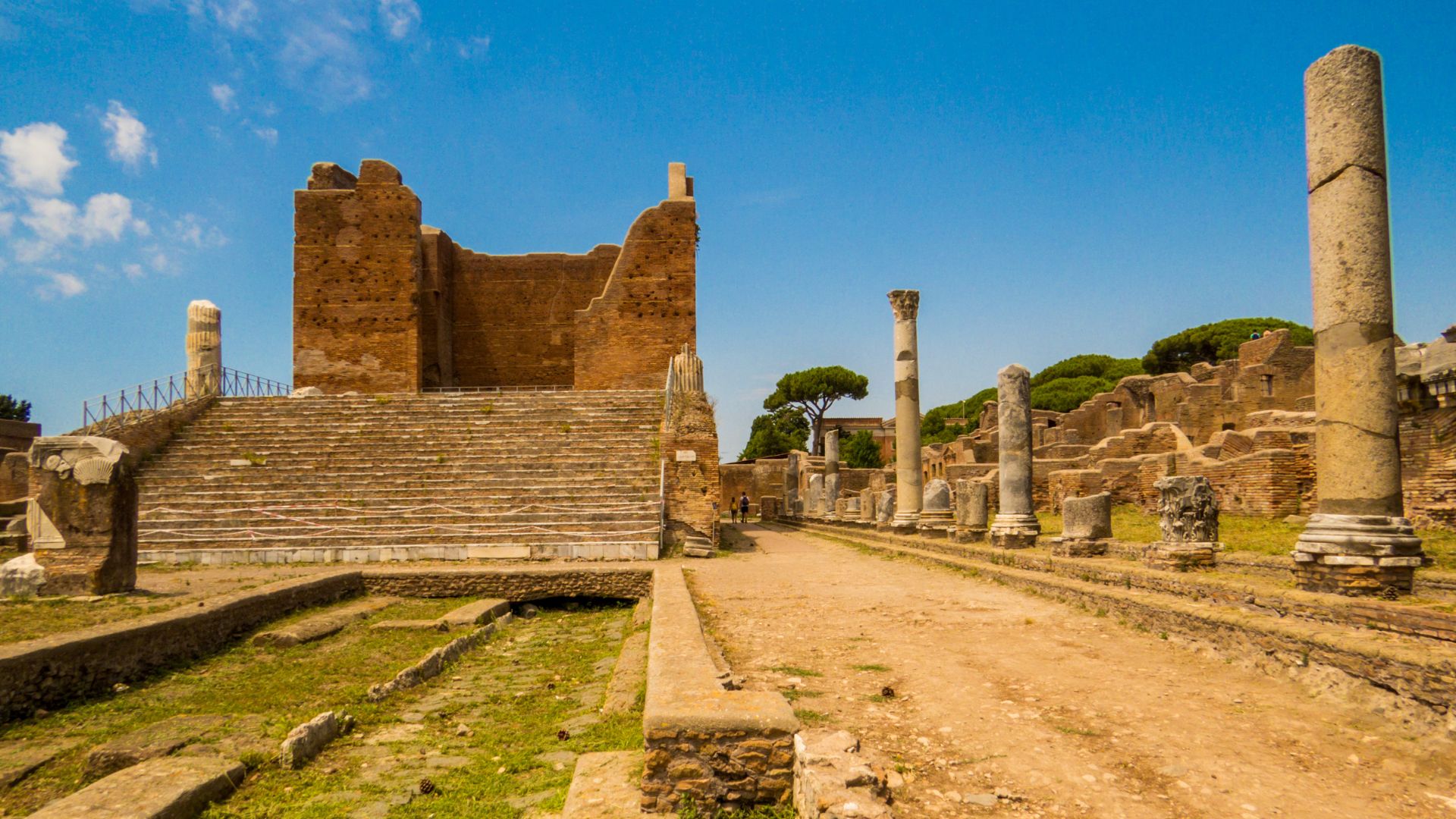
Enjoying Modern Comforts
While exploring ancient ruins is fascinating, Ostia Antica also offers pleasant modern amenities that make your visit comfortable and relaxing. The site strikes a perfect balance between historical immersion and practical conveniences for today’s travelers.
Grabbing a Bite at the Café
The small café near the entrance provided a welcome respite after hours of walking through ancient streets. I stopped for a quick lunch when my energy started to flag around midday.
The café offers surprisingly good food at reasonable prices – much better than what you’d find at more touristy sites. I enjoyed a delicious slice of margherita pizza that hit the spot perfectly.
They also serve excellent espresso which gave me the boost I needed to continue exploring. The outdoor seating area lets you rest your feet while planning which sections to visit next.
Staff Tip: Bring cash as credit card machines occasionally malfunction due to the remote location.
Relaxing under Pine Trees near Ostia Lido
After finishing at the archaeological site, I took a short bus ride to nearby Ostia Lido. This modern beach town offers a perfect complement to your historical explorations.
The coastal area features beautiful pine trees that provide natural shade from the Mediterranean sun. I found a bench under these fragrant trees and spent an hour simply unwinding.
From this peaceful spot, you can glimpse the sparkling Mediterranean Sea while enjoying a gentle breeze. The contrast between ancient ruins and modern beach vibes makes for a perfectly balanced day trip.
Several small gelaterias and cafés line the streets near the pine grove. I grabbed a cone of stracciatella to enjoy while people-watching along the promenade.

Practical Tips for the Visit
Planning your visit to Ostia Antica requires some forethought to make the most of this incredible archaeological site. Here are some essential tips that will help you navigate the ancient streets comfortably and efficiently.
Benefits of an Audio Guide
Getting an audio guide was the best decision I made when visiting Ostia Antica. The detailed commentary brings the ruins to life, explaining the function of each building as you wander through the ancient streets.
When I stood before the impressive Mill, the audio guide explained how grain was processed here to feed Rome’s massive population. It helped me understand the layout of the Roman Forum and visualize the bustling marketplace it once was.
Without a guide, I would have missed the significance of the Baths of Caracalla, where Romans socialized while enjoying hot and cold baths. The audio guide costs about €6, but it’s worth every euro for the rich historical context it provides.
Best Time to Visit
Early morning is the sweet spot for exploring Ostia Antica. I arrived at 9:30 AM. I enjoyed nearly empty streets for the first hour, perfect for taking photos without crowds.
Summer brings intense heat. So spring and fall offer more comfortable temperatures for exploring the extensive ruins. I visited in April and found the weather ideal for walking the ancient pathways along what was once the Tiber River’s path to the sea.
Weekdays are significantly less crowded than weekends. Try to avoid Sundays when locals often visit for family outings. The site closes at 5:30 PM in summer and 4:30 PM in winter. Plan to spend at least 3-4 hours exploring to do it justice.
